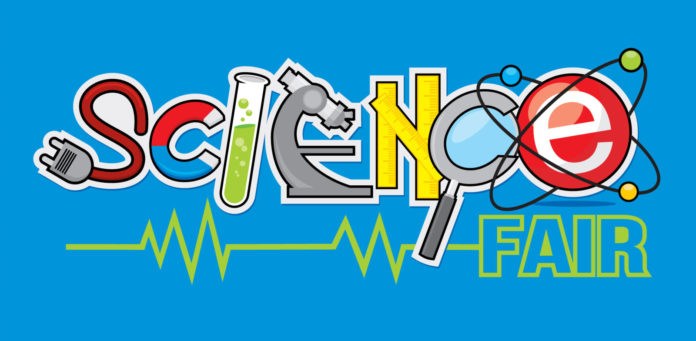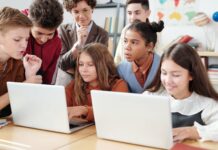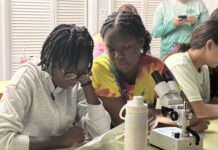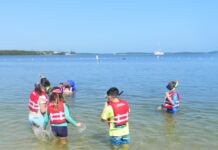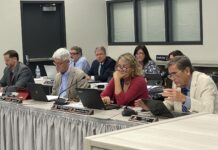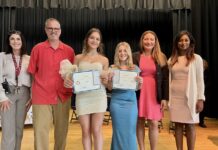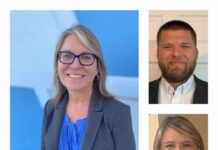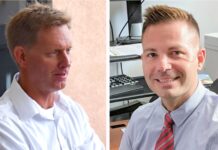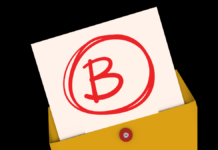When the March 24 Florida State Science and Engineering Fair (SSEF) was canceled, the kids from Monroe County School District who were supposed to present their projects were “really devastated,” said Eli Jannes, principal of Sigsbee Charter School in Key West.
The science fair typically brings students from all over the state to Lakeland to compete against each other. It’s a really big deal to earn a spot, said Melissa Alsobrooks, science K-12 coordinator for Monroe County schools. Students had to top their school and regional science fairs, where they were judged on project quality and how they respond to interview questions about their project, Alsobrooks says. Projects that earn top scores are selected for the state competition.
Because SSEF (and much of the school year) have been canceled, the Weekly is hosting a “virtual STEM Fair” here to showcase our students and their accomplishments.
In total, nine students from Monroe County qualified for this year’s SSEF. Those students are eligible for next year’s fair.
In no particular order, here are some of the qualifying projects:
Sydney Eysenbach, 12
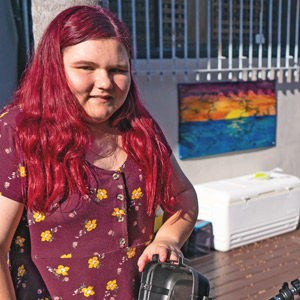 Grade, School: 7, Treasure Village
Grade, School: 7, Treasure Village
Montessori Charter School
Project: Build an electric bike with storage capacity and a motor that doesn’t emit carbon dioxide as a reliable way to get to school without adding to climate change.
Why it will change the world: My project is about finding a better way to get kids to school that’s environmentally friendly, so we’re not releasing as much carbon into the atmosphere. Also, it’s just fun!
How do you feel? I was nervous when I found out I was going, but I hid my nervousness with my excitement. Next year, I want to build on my project and use solar panels on the roof of my house to charge the bike with no carbon footprint. If we scaled it to replace buses, solar panels on school roofs could charge bikes during daylight hours. There would be enough charge to get bikes back home and then back to school.
Robert Aleman, 13
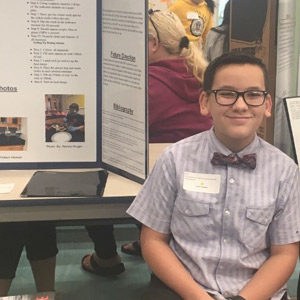 Grade, School: 7, Key Largo School
Grade, School: 7, Key Largo School
Project: Testing how long it takes for bisphenol A, a deadly chemical in plastic, to leach into soil under heat.
Why it will change the world: My research can bring light to the fact that every time you drink out of a plastic water bottle or buy your lunch in a plastic bag, there can be many negative consequences to your health such as changes to brain development, fetal development and adult ovarian function. If plastic leaches into areas where food is grown, you can ingest these chemicals. With my research, people can understand that there are things they may be doing that can cause very serious damage to their health and hopefully make positive changes.
How do you feel? When I learned I was advancing to the state STEM fair, I was beyond thrilled. Six months of hard work had paid off and I was very glad that it had.
Hannah “Neslo” Atilla, 13
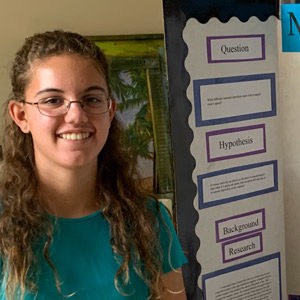 Grade, School: 7, Sigsbee Charter School
Grade, School: 7, Sigsbee Charter School
Project: Testing how “maglev” (magnetic levitation) train speeds are affected by different objects placed on the track. Maglev trains use magnets that repel each other on the bottom of the train car and the track, making the trains essentially float. They can travel up to 375 miles per hour.
Why it will change the world: This would change American public transportation for the better. The main obstacle to building maglev trains in America is lack of funding, because we don’t know enough about how maglev trains work. With my experiment to test how different objects affected the speed of a maglev train, we would learn more and be able to build one with more confidence sometime in the near future.
How do you feel? When I learned I was advancing, I felt surprised but also really happy. I advanced to the regional STEM fair last year and didn’t place at all, so I was expecting the same thing this year. When they called out my name, it was kind of surreal.
William Stolze, 14 and Edward Strunk, 14
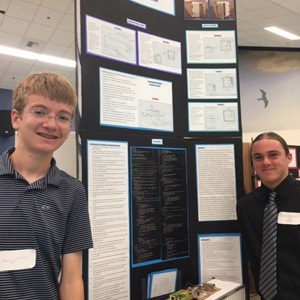 Grade, School: 8, Sigsbee
Grade, School: 8, Sigsbee
Charter School
Project: Design the Attachable Biometric Interface System for an Internal Locking ISO Shipping Container, a more secure way to lock seagoing shipping containers (from the inside). Using a biometric fingerprint interface to unlock an internal locking mechanism, the redesign better ensures security of cargo and prevents the illegal introduction of illicit narcotics or other contraband materials once shipping containers have been inventoried, sealed, and begun their international movement.
Why it will change the world:
William: This invention can help prevent intrusion into shipping containers, stop the theft of goods and materials from within these containers, and limit the introduction of illicit goods into otherwise legitimate cargo movements. This, in turn, will reduce costs associated with customs inspections, law enforcement activity and insurance claims at the same time it helps stem the flow of dangerous contraband into and through the United States and other countries around the globe.
Edward: Our design offers an efficient, cost-effective solution to boosting the security of the shipping industry. It prevents tampering with seagoing shipping containers, effectively not letting criminals steal trade goods and use commercial containers as a means to transport illicit materials. This can replace other, much more expensive security measures used by shipping companies, increasing both profit and safety.
How do you feel?
William: It’s an achievement and a privilege to be able to compete in this highly in tellectual and interactive event. Since last year’s competition, my research partner and I worked many long days on this project hoping we could match the level of talent we saw last year and make ourselves more competitive than we were during our first experience. We were looking forward to standing in front of the judges once again, explaining the significance of our new project.
Edward: When Will and I learned that we were going on to state, we were elated! It is always such a good feeling to know that your hours and hours of hard work finally paid off, and that you are one step closer to solving a world problem. Will and I were equally disappointed when we heard that it had been canceled, but we knew that it was probably for the best, because the decision was made for the well-being of our community.
Nina Bowen, 15
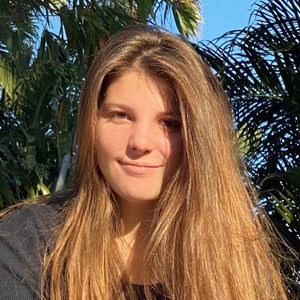 Grade, School: 9, Key West High School
Grade, School: 9, Key West High School
Project: Testing the effects of nitrates and phosphates in agricultural runoff from plant fertilizers. I built a machine to collect the runoff from a growing sugar cane plant and directed the runoff flow into a plastic container with pond water to test if fertilizer contents aid algal bloom. The organic sample grew significantly faster and had no algal content, compared to the fertilized sample which grew slower and had significant algae growth.
Why will it change the world?
Now, I am testing if standard air pumps at the bottoms of my machines that collect runoff can decrease phosphate and nitrate concentrates. If this works, using standard air pumps may solve the problems of algal blooms in Lake Okeechobee. We can discover new ways to prevent the spread along with healthier alternatives to harsh chemicals in our fertilizers. Once we prevent algal blooms, not only will our economies benefit, but our oceans will too.
How do you feel?
I was in shock. This whole journey from the simple science project idea in the car, to celebrating with my family and telling everyone who had been rooting for me was one of the best feelings imaginable. I want to see more good in the world and more positivity, and I thought my project could contribute. I believed that if I worked hard enough I would succeed. Just making it to regionals was a huge accomplishment for me. I am still so appreciative even though states are canceled; I am still so proud of how far my project has come and I look forward to next year.











